A Study on the Spatial Perception and Inclusive Characteristics of Outdoor Activity Spaces in Residential Areas for Diverse Populations from the Perspective of All-Age Friendly Design
Abstract
1. Introduction
1.1. The Connotation and Relationship of All-Age Friendly and Inclusive Design
1.2. Current Research on Spatial Perception Driven by Human Factor Technology
1.3. Intelligent Prediction and Model Evaluation Based on Machine Learning
2. Materials and Methods
2.1. Research Framework Construction
2.2. Population Group Classification
2.3. Evaluation Indicator Selection
2.3.1. Objective Physiological Indicator Selection
2.3.2. Subjective Evaluation Indicator Selection
2.4. Human Factor Experiment Setup
2.4.1. Spatial Sample Collection
2.4.2. Experimental Platform Construction
2.4.3. Experiment Execution and Data Collection
3. Results
3.1. Analysis of Differences in Spatial Subjective Perception
3.2. Analysis of Spatial Inclusivity Classification
3.2.1. Data Mining Based on SOM Neural Network
3.2.2. Matching Physiological Indicators with Clustering Results
3.3. Analysis of Spatial Inclusivity Characteristics
3.3.1. Comparative Analysis of Machine Learning Models
3.3.2. Summary of Spatial Inclusivity Characteristics for Diverse Groups
4. Discussion
5. Conclusions
- (1).
- Subjective Perception of Residential Outdoor Activity Spaces: Children prioritize the recreational attributes of spaces, paying less attention to the completeness of facilities and crowd conflicts. Adults emphasize child companionship and property management, while also paying more attention to intergenerational conflicts. The elderly focus more on spatial safety, such as pavement conditions, barrier-free facilities, and parking management.
- (2).
- Physiological Perception of Diverse Populations: Among the four physiological indicators (EDA, HRV, RESP, and SKT), HRV provides the most significant feedback on spatial perception. In terms of predicting spatial inclusivity, the Extra Trees model demonstrated the highest accuracy.
- (3).
- Inclusivity Characteristics of Residential Outdoor Activity Spaces: All groups highly ranked spatial characteristics such as unobstructed views, adequate space, diverse landscapes, proximity accessibility, and smooth pavement surfaces, with similar levels of importance. Differences were observed in the children placed a higher emphasis on environmental familiarity and play facilities, while the adults and elderly prioritize space sufficiency, parking management, and barrier-free facilities.
Author Contributions
Funding
Data Availability Statement
Acknowledgments
Conflicts of Interest
Abbreviations
| EDA | Electrodermal Activity |
| HRV | Heart Rate Variability |
| SKT | Skin Temperature |
| RESP | Respiratory Rate |
| VR | Virtual Reality |
| SOM | Self-Organizing Map neural network |
References
- Aerts, J. Shaping Urbanization for Children—A Handbook on Child-Responsive Urban Planning; United Nations Children’s Fund (UNICEF): Beijing, China, 2018; p. 10. [Google Scholar]
- Du, S.; Wang, C.; Mao, L. Exploring the Influence of the Perceived Neighborhood Built Environment on the Fall Risks among Older Adults in China. J. Build. 2024, 14, 2631. [Google Scholar] [CrossRef]
- He, D.; Liu, H. Population Aging Trend, Impact and Coping Strategies in China. J. Party Sch. Cent. Comm. CPC.(Chin. Acad. Gov.) 2019, 23, 84–90. [Google Scholar]
- Fan, S.; Yang, Y.; Liu, Y. The Experiences of Foreign Cities Handling the Aging of Population. J. Southwest Jiaotong Univ. (Soc. Sci.) 2017, 18, 82–90. [Google Scholar]
- Zhang, C. Research on the Planning and Design Strategy of All-Age Elderly Care Community from the Perspective of Intergenerational Integration. Master’s Thesis, Liaoning Technical University, Fuxin, China, 2023. [Google Scholar]
- Wu, X. Development Trend, Realistic Dilemma, and Optimization Path of the Smart Elderly Care Industry. J. East China Econ. Manag. 2021, 35, 1–9. [Google Scholar]
- Li, Q.; Kaplan, M. The intergenerational strategy and its social practice under the background of aging—The possibility and future of China. J. Soc. Sci. Int. 2017, 4, 54–63. [Google Scholar]
- Li, X. Inclusive Design: Public Space Regeneration Strategy for the Targets of Residential area for All Ages. Urban Dev. Stud. J. 2019, 26, 27–31. [Google Scholar]
- Li, H. Research on Spatial Environment Optimization Design of Urban Collective Residential Areas to Promote Intergenerational Integration. Ph.D. Thesis, Harbin Institute of Technology, Harbin, China, 2019. [Google Scholar]
- Harding, E. Towards Lifetime Neighborhoods: Designing Sustainable Communities for All; International Longevity Centre: London, UK, 2007. [Google Scholar]
- Bianchin, M.; Heylighen, A. Fair by design. Addressing the paradox of inclusive design approaches. Des. J. 2017, 20 (Suppl. S1), S3162–S3170. [Google Scholar] [CrossRef]
- Benktzon, M. Designing for our future selves: The Swedish experience. J. Appl. Ergon. 1993, 24, 2–69. [Google Scholar] [CrossRef]
- Clarkson, J.; Coleman, P.R. History of Inclusive Design in the UK. J. Appl. Ergon. 2015, 46, 235–247. [Google Scholar] [CrossRef]
- Microsoft Corporation; Forrester Research. The Wide Range of Abilities and Its Impact on Computer Technology; Microsoft Corporation: Cambridge, UK, 2003. [Google Scholar]
- Keates, S.; Clarkson, P.J. Countering design exclusion: Bridging the gap between usability and accessibility. Univers. Access Inf. Soc. 2003, 2, 215–225. [Google Scholar] [CrossRef]
- Yi, S. A study on the Health-Promotion Outdoor Space of Chengdu Urban Built Community Under the Aging Background. Ph.D. Thesis, Sichuan Agriculture University, Chengdu, China, 2018. [Google Scholar]
- Bridger, R. Introduction to Human Factors and Ergonomics, 4th ed.; CRC Press: Milton, ON, Canada, 2017. [Google Scholar]
- Mccauley-Bush, P. Ergonomics: Foundational Principles, Applications, and Technologies; CRC Press: Boca Raton, FL, USA, 2011. [Google Scholar]
- Rayner, K. Eye Movements and Visual Cognition: Scene Perception and Reading; Springer Science & Business Media: New York, NY, USA, 2012. [Google Scholar]
- Cifrek, M.; Medved, V.; Tonković, S. Surface EMG based muscle fatigue evaluation in biomechanics. Clin. BioMech. 2009, 24, 327–340. [Google Scholar] [CrossRef]
- Bell, S. Landscape: Pattern, Perception, and Process; E & FN Spon: New York, NY, USA, 1999. [Google Scholar]
- Pigliautile, I.; Casaccia, S.; Morresi, N.; Arnesano, M.; Pisello, A.L.; Revel, G.M. Assessing occupants’ personal attributes in relation to human perception of environmental comfort: Measurement procedure and data analysis. Build. Environ. 2020, 177, 106901. [Google Scholar] [CrossRef]
- Xu, X.; Long, H.; Zhao, C.; Jiang, N.; Xiao, J. Quantitative Evaluation of Street Space Quality Based on Residents’ Psychological Feelings: Taking Streets in Chongqing’s Main Districts as an Example. J. Huazhong Archit. 2020, 39. [Google Scholar]
- Zhang, L.M.; Zhang, R.X.; Jeng, T.S.; Zeng, Z.Y. Cityscape protection using VR and eye tracking technology. J. Vis. Commun. Image Represent. 2019, 64, 102639. [Google Scholar] [CrossRef]
- Omidvar, A.; Kim, J. A novel theoretical model for predicting the individuals’ thermal sensations based on air temperature and biomarkers measured by wearable devices. Build. Environ. 2023, 232, 110050. [Google Scholar] [CrossRef]
- Wang, Z.; Zhuang, W. Research on Block Renewal Post Occupancy Evaluation Methods Based on Image Deep Learning: A Case Study of Shichahai in Beijing. New Archit. 2022, 3, 5–8. [Google Scholar]
- Tao, Y.; Wang, Y.; Wang, X.; Tian, G.; Zhang, S. Measuring the Correlation between Human Activity Density and Streetscape Perceptions: An Analysis Based on Baidu Street View Images in Zhengzhou, China. Land 2022, 11, 400. [Google Scholar] [CrossRef]
- Kazemi, F.; Çiftçioğlu, A.Ö.; Shafighfard, T.; Asgarkhani, N.; Jankowski, R. RAGN-R: A multi-subject ensemble machine-learning method for estimating mechanical properties of advanced structural materials. Comput. Struct. 2025, 308, 107657. [Google Scholar] [CrossRef]
- Rajan, A.C.; Mishra, A.; Satsangi, S.; Vaish, R.; Mizuseki, H.; Lee, K.R.; Singh, A.K. Machine-Learning-Assisted Accurate Band Gap Predictions of Functionalized MXene. Chem. Mater. 2018, 30, 4031–4038. [Google Scholar] [CrossRef]
- Aryal, A.; Becerik-Gerber, B. A comparative study of predicting individual thermal sensation and satisfaction using wrist-worn temperature sensor, thermal camera and ambient temperature sensor. Build. Environ. 2019, 160, 106223. [Google Scholar] [CrossRef]
- Yang, B.; Li, X.; Liu, Y.; Chen, L.; Guo, R.; Wang, F.; Yan, K. Comparison of models for predicting winter individual thermal comfort based on machine learning algorithms. Build. Environ. 2022, 215, 108970. [Google Scholar] [CrossRef]
- Wu, Y.; Fan, J.; Cao, B. Comparison among different modeling approaches for personalized thermal comfort prediction when using personal comfort systems. Energy Build. 2023, 285, 112873. [Google Scholar] [CrossRef]
- Yang, H.; Shi, X.; Zheng, L. A review of Piaget’s theory of child cognitive development. Forw. Position 2007, 6, 55–57. [Google Scholar]
- Sheng, K.; Liu, L.; Wang, F.; Li, S.; Zhou, X. An Eye-Tracking Study on Exploring Children’s Visual Attention to Streetscape Elements. Buildings 2025, 15, 605. [Google Scholar] [CrossRef]
- Li, X. A Study on Intergenerational Cultural Harmony of Contemporary China. Ph.D. Thesis, Southwest Jiaotong University, Chengdu, China, 2008. [Google Scholar]
- Malmberg, J.; Järvelä, S.; Holappa, J.; Haataja, E.; Huang, X.; Siipo, A. Going beyond what is visible: What multichannel data can reveal about interaction in the context of collaborative learning? Comput. Hum. Behav. 2019, 96, 235–245. [Google Scholar] [CrossRef]
- Fournier, L.R.; Wilson, G.F.; Swain, C.R. Electrophysiological, behavioral, and subjective indexes of workload when performing multiple tasks: Manipulations of task difficulty and training. Int. J. Psychophysiol. 1999, 31, 129–145. [Google Scholar] [CrossRef]
- Liu, W.; Lian, Z.; Liu, Y. Heart rate variability at different thermal comfort levels. Eur. J. Appl. Physiol. 2008, 103, 361–366. [Google Scholar] [CrossRef]
- Nickel, P.; Nachreiner, F. Sensitivity and Diagnosticity of the 0.1-Hz Component of Heart Rate Variability as an Indicator of Mental Workload. J. Hum. Factors Ergon. Soc. 2003, 45, 575–590. [Google Scholar] [CrossRef]
- National Institutes of Health. Respiratory Research; Pubmed, C., Ed.; BioMed Central: London, UK, 2000.
- Shang, Y. Subgraph Robustness of Complex Networks Under Attacks. IEEE Trans. Syst. Man Cybern. Syst. 2019, 49, 821–832. [Google Scholar] [CrossRef]
- Torku, A.; Chan, A.P.; Yung, E.H.; Seo, J. The influence of urban visuospatial configuration on older adults’ stress: A wearable physiological-perceived stress sensing and data mining based-approach. Build. Environ. 2001, 206, 108298. [Google Scholar] [CrossRef]
- Wu, Y.; Yang, Y.; Liang, X. Typical spatiotemporal patems of the Kuroshio south of Japan and the Kuroshio extension using selforganizing maps and their causal relationship. Haiyang Xuebao 2022, 44, 38–54. [Google Scholar]
- Yamamoto, Y.; Yamamoto, D.; Takada, M.; Naito, H.; Arie, T.; Akita, S.; Takei, K. Efficient Skin Temperature Sensor and Stable Gel-Less Sticky ECG Sensor for a Wearable Flexible Healthcare Patch. Adv. Healthc. Mater. 2017, 6, 1700495. [Google Scholar] [CrossRef] [PubMed]


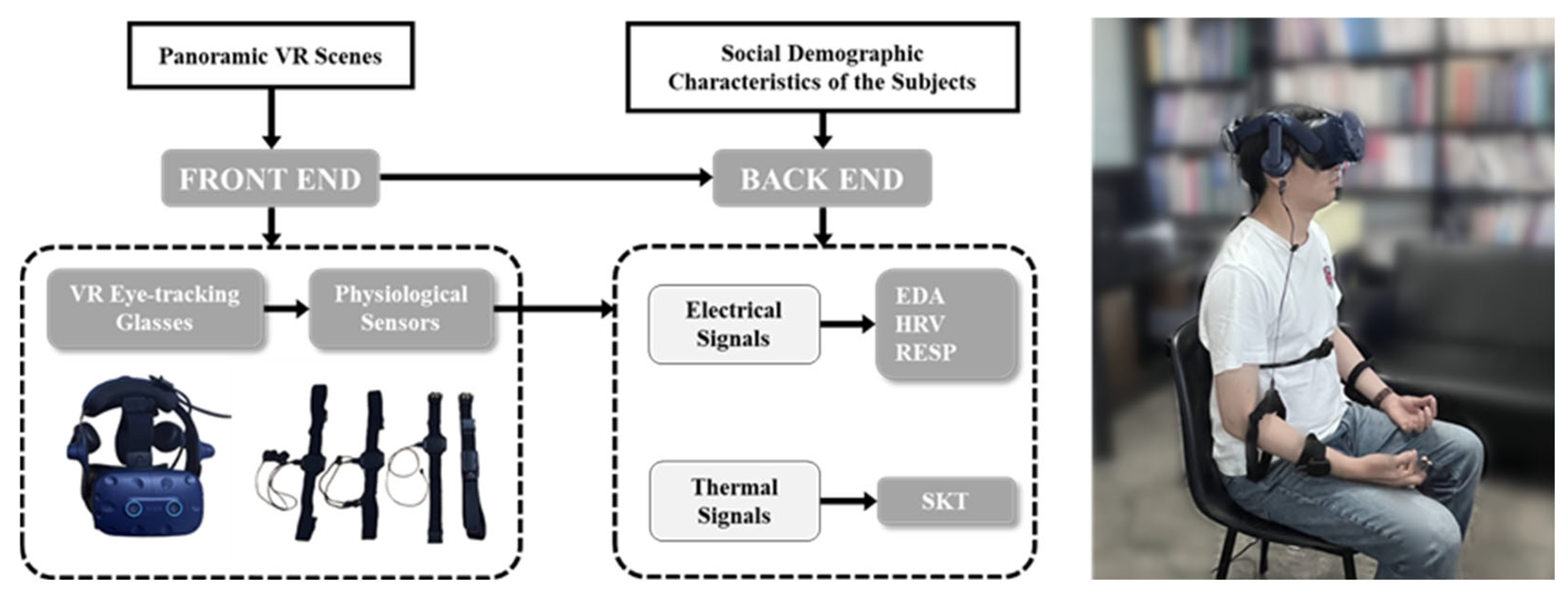


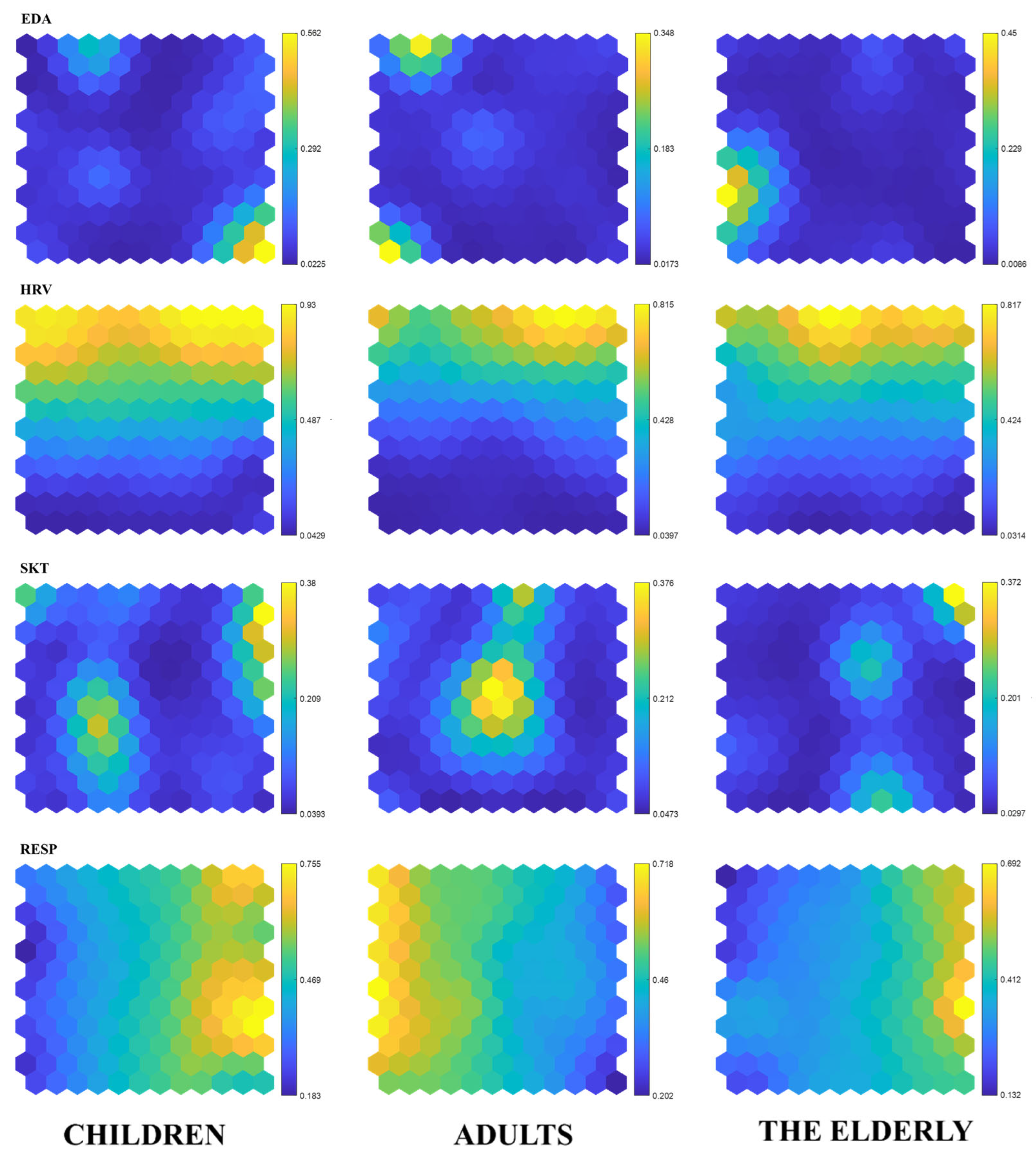

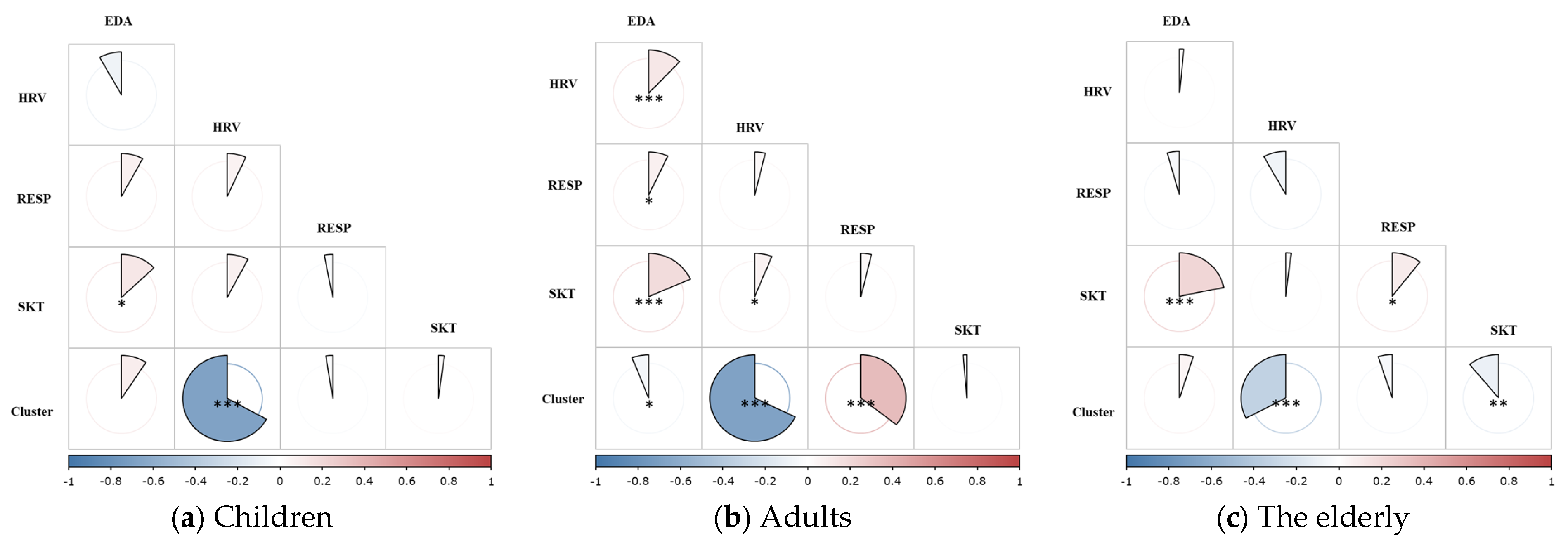
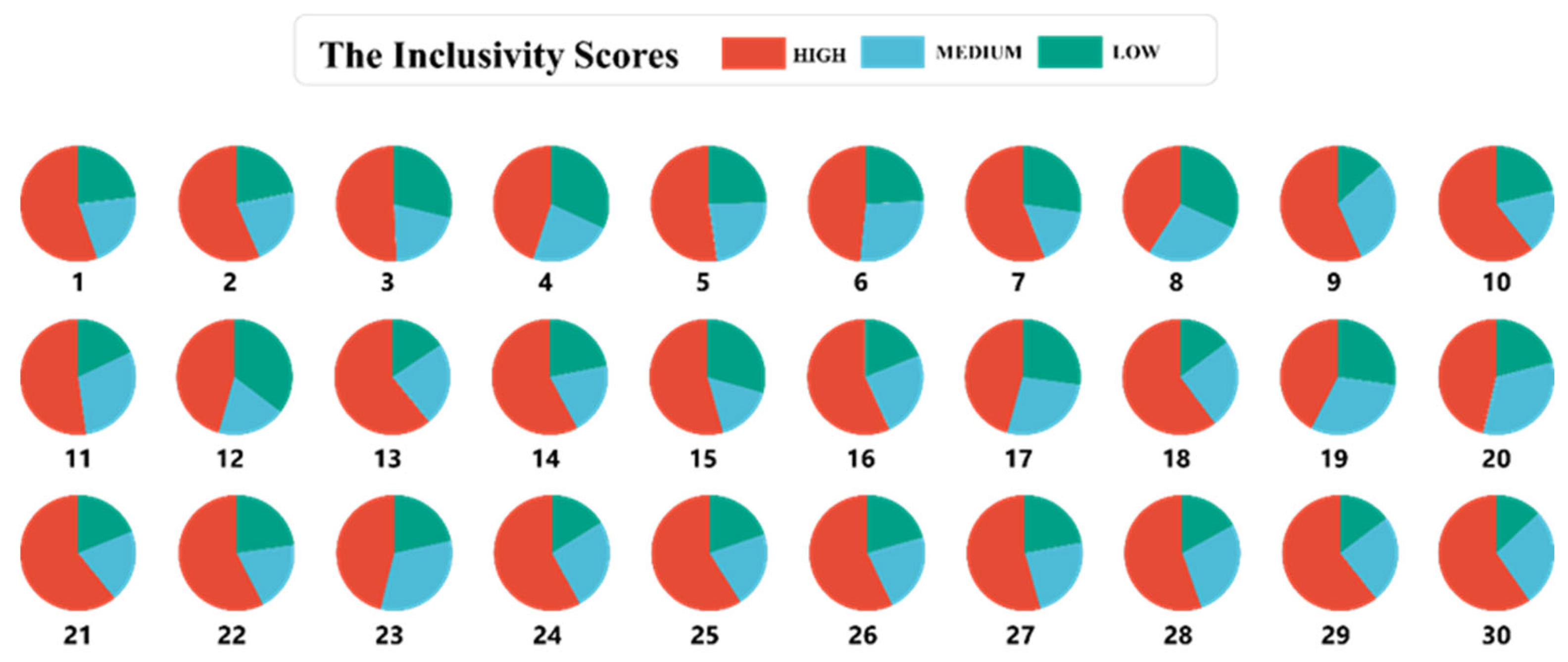
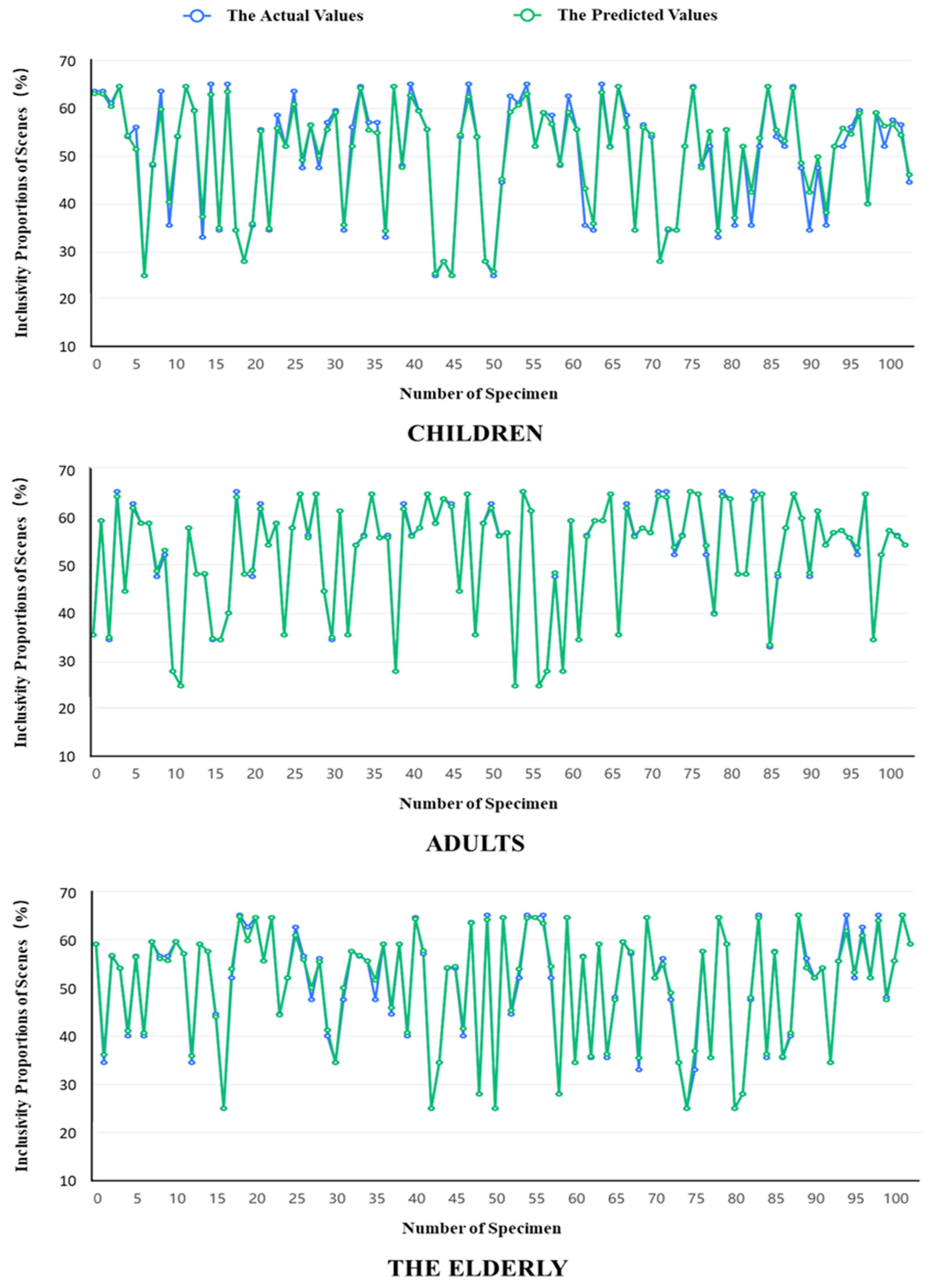

| Research Field | Dataset Size | Train/Test Percentage | Models Utilized | Model Metrics | References |
|---|---|---|---|---|---|
| Mechanical properties of advanced structural materials | 1200 | 75%/25% | Artificial Neural Network (ANN) Extra Trees (ET) Adaptive Boosting (AdaBoost) Gradient Boosting (GB) Extreme Gradient Boosting (XGBoost) Support Vector Machine (SVM) | RMSE MSE R2 | Farzin Kazemi (2025) [28] |
| Personalized thermal comfort | 1196 | 80%/20% | Random Forest (RF) Logistic Regression (LR) Support Vector Machine (SVM) | Accuracy | Yeyu Wu (2023) [32] |
| Winter individual thermal comfort | 8000 | 70%/30% | Support Vector Machine (SVM) Decision Tree (DT) K-Nearest Neighbors (KNN) | Precision Recall F1-score | Bin Yang (2022) [31] |
| Individual thermal sensation and satisfaction | 543 | 80%/20% | Random Forest (RF) K-Nearest Neighbors (KNN) Support Vector Machine (SVM) | MAPE R2 | Ashrant Aryal (2019) [30] |
| Band Gap Predictions of Functionalized MXene | 7200 | 90%/10% | Kernel Ridge Regression (KRR) Support Vector Machine (SVM) Gaussian Process Regression (GPR) | RMSE R2 | Arunkumar Chitteth Rajan (2018) [29] |
| Diverse Population | Indicators | Metrics | p-Values | Cohen’s F-Values |
|---|---|---|---|---|
| Children | EDA | Standard Deviation (μS) | 0.000 *** | 3.266 |
| HRV | RMSSD (ms) | |||
| RESP | Standard Deviation (rpm) | |||
| SKT | Standard Deviation (°C) | |||
| Adults | EDA | Standard Deviation (μS) | 0.000 *** | 3.659 |
| HRV | RMSSD (ms) | |||
| RESP | Standard Deviation (rpm) | |||
| SKT | Standard Deviation (°C) | |||
| The elderly | EDA | Standard Deviation (μS) | 0.000 *** | 3.549 |
| HRV | RMSSD (ms) | |||
| RESP | Standard Deviation (rpm) | |||
| SKT | Standard Deviation (°C) |
| Diverse Population | ML Algorithm | R2 | MSE | RMSE | MAE |
|---|---|---|---|---|---|
| Children | Extra Trees | 0.978 | 12.34 | 3.51 | 2.345 |
| KNN | 0.752 | 48.76 | 6.98 | 5.123 | |
| BPNN | 0.698 | 58.32 | 7.63 | 6.234 | |
| SVR | 0.563 | 78.91 | 8.88 | 6.789 | |
| Adults | Extra Trees | 0.982 | 9.87 | 3.14 | 2.123 |
| KNN | 0.781 | 42.34 | 6.50 | 4.567 | |
| BPNN | 0.723 | 54.32 | 7.3 | 5.678 | |
| SVR | 0.612 | 72.34 | 8.50 | 5.789 | |
| The elderly | Extra Trees | 0.973 | 13.45 | 3.66 | 3.012 |
| KNN | 0.735 | 47.89 | 6.92 | 5.234 | |
| BPNN | 0.689 | 62.34 | 7.89 | 6.567 | |
| SVR | 0.532 | 82.34 | 9.07 | 7.123 |
Disclaimer/Publisher’s Note: The statements, opinions and data contained in all publications are solely those of the individual author(s) and contributor(s) and not of MDPI and/or the editor(s). MDPI and/or the editor(s) disclaim responsibility for any injury to people or property resulting from any ideas, methods, instructions or products referred to in the content. |
© 2025 by the authors. Licensee MDPI, Basel, Switzerland. This article is an open access article distributed under the terms and conditions of the Creative Commons Attribution (CC BY) license (https://creativecommons.org/licenses/by/4.0/).
Share and Cite
Yin, B.; Wang, L.; Xu, Y.; Heng, K.C. A Study on the Spatial Perception and Inclusive Characteristics of Outdoor Activity Spaces in Residential Areas for Diverse Populations from the Perspective of All-Age Friendly Design. Buildings 2025, 15, 895. https://doi.org/10.3390/buildings15060895
Yin B, Wang L, Xu Y, Heng KC. A Study on the Spatial Perception and Inclusive Characteristics of Outdoor Activity Spaces in Residential Areas for Diverse Populations from the Perspective of All-Age Friendly Design. Buildings. 2025; 15(6):895. https://doi.org/10.3390/buildings15060895
Chicago/Turabian StyleYin, Biao, Lijun Wang, Yuan Xu, and Kiang Chye Heng. 2025. "A Study on the Spatial Perception and Inclusive Characteristics of Outdoor Activity Spaces in Residential Areas for Diverse Populations from the Perspective of All-Age Friendly Design" Buildings 15, no. 6: 895. https://doi.org/10.3390/buildings15060895
APA StyleYin, B., Wang, L., Xu, Y., & Heng, K. C. (2025). A Study on the Spatial Perception and Inclusive Characteristics of Outdoor Activity Spaces in Residential Areas for Diverse Populations from the Perspective of All-Age Friendly Design. Buildings, 15(6), 895. https://doi.org/10.3390/buildings15060895






